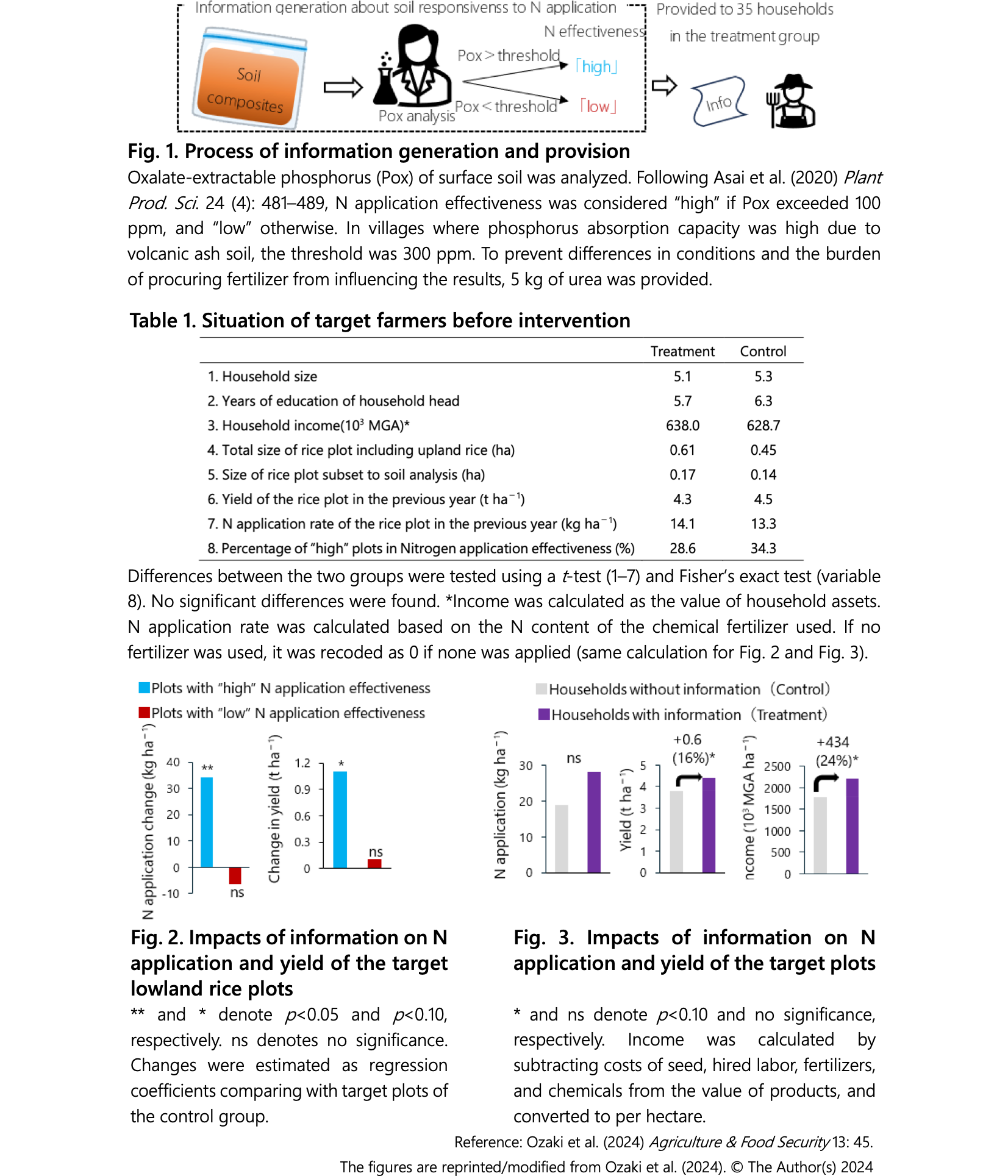Simple soil diagnostic information increases lowland rice yields and income of smallholder farmers in Madagascar
Description
In sub-Saharan Africa, where farmers face low purchasing power and high spatial variability in soil fertility, targeting fertilizer application to responsive plots is crucial to improve agricultural productivity and income. However, the use of soil diagnostic information remains limited due to the complexity and high cost of generating such data, which involves assessing multiple soil characteristics. Few experimental studies have empirically evaluated the impact of providing soil diagnostic information on farmers’ fertilizer use and income. This study focuses on the central highlands of Madagascar, where fertilizer use is low compared to other SSA countries and soil phosphorus deficiency is a major constraint on agricultural productivity. Through a socioeconomic experiment, this study examines the impact of providing smallholder farmers with simple diagnostic information based solely on soil phosphorus content on their fertilizer use, productivity, and income.
In our experiment, soil composites were collected from the focal lowland rice plots of randomly selected 70 households across 10 villages. Oxalate-extractable phosphorus content was analyzed to determine whether the effectiveness of nitrogen application would be high or low. Only 35 households in the treatment group received this binary information before the cultivation period began (Fig. 1). The treatment and control groups were randomly assigned, with no prior differences observed between them in terms of income, plot size, lowland rice yield, chemical fertilizer use, or the proportion of plots where nitrogen application effectiveness was classified as high (Table 1). The results demonstrated that, at the plot level, receiving information that nitrogen application effectiveness was high led to a higher nitrogen application rate and lowland rice yield by 34.1 kg ha−1 (76%) and 1.1 t ha−1 (24%), respectively, compared to the plots of control group households, where no diagnostic information was provided (Fig. 2). In terms of household-level impacts, the receipt of the binary diagnostic information led to a 0.6 t ha−1 (16%) higher rice yield and 434,000 MGA ha−1 (24%) higher income for households in the treatment group compared to those in the control group, while the nitrogen application rate did not show a significant difference (Fig. 3).
This study provided insights into policy design to promote efficient fertilizer management, thereby improving farm productivity and income, especially in regions where farmers’ purchasing power is limited and soil fertility varies from field to field.
Figure, table
- Research project
- Program name
- Term of research
-
FY2017-2024
- Responsible researcher
-
Ozaki Ryosuke ( Social Sciences Division )
ORCID ID0000-0001-7152-8337KAKEN Researcher No.: 80965244Tsujimoto Yasuhiro ( Crop, Livestock and Environment Division )
ORCID ID0000-0001-7738-9913KAKEN Researcher No.: 20588511Andriamananjara Andry ( University of Antananarivo )
Rakotonindrina Hobimiarantsoa ( University of Antananarivo )
Sakurai Takeshi ( University of Tokyo )
ORCID ID0000-0002-9007-4147KAKEN Researcher No.: 40343769 - ほか
- Publication, etc.
-
Ozaki et al. (2024) Agriculture & Food Security 13:45.https://doi.org/10.1186/s40066-024-00500-5
- Japanese PDF
-
2024_B06_ja.pdf523.61 KB
- English PDF
-
2024_B06_en.pdf244.34 KB
* Affiliation at the time of implementation of the study.

